In late fall 2019, Sujittra Avery Carr, approached us about doing an internship. We had various projects in the brainstorm phase for the Suffrage Centennial in summer 2020, but besides a Wikipedia editathon to improve or add articles on Pacific Northwest women and a vague idea for an exhibit, we were wide open for whatever she wanted to do. Little did we know what was on the horizon. A series of cancellations and closures for physical events, but limitless options for online projects.

Carr put together a terrific exhibit on women in medicine and two very talented graphic design students helped bring color to her content. The full exhibit can be found in ScholarsArchive, our institutional repository, but the text of this post contains her introductory panel.
DECEMBER 2021 UPDATE: The panels are up!
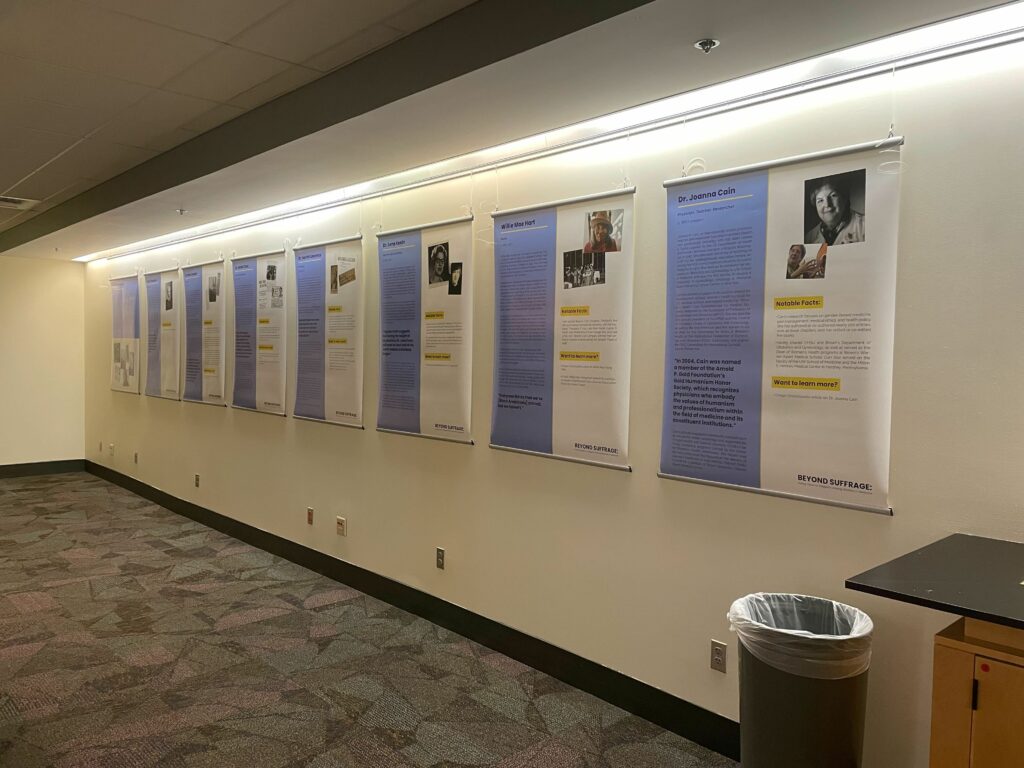
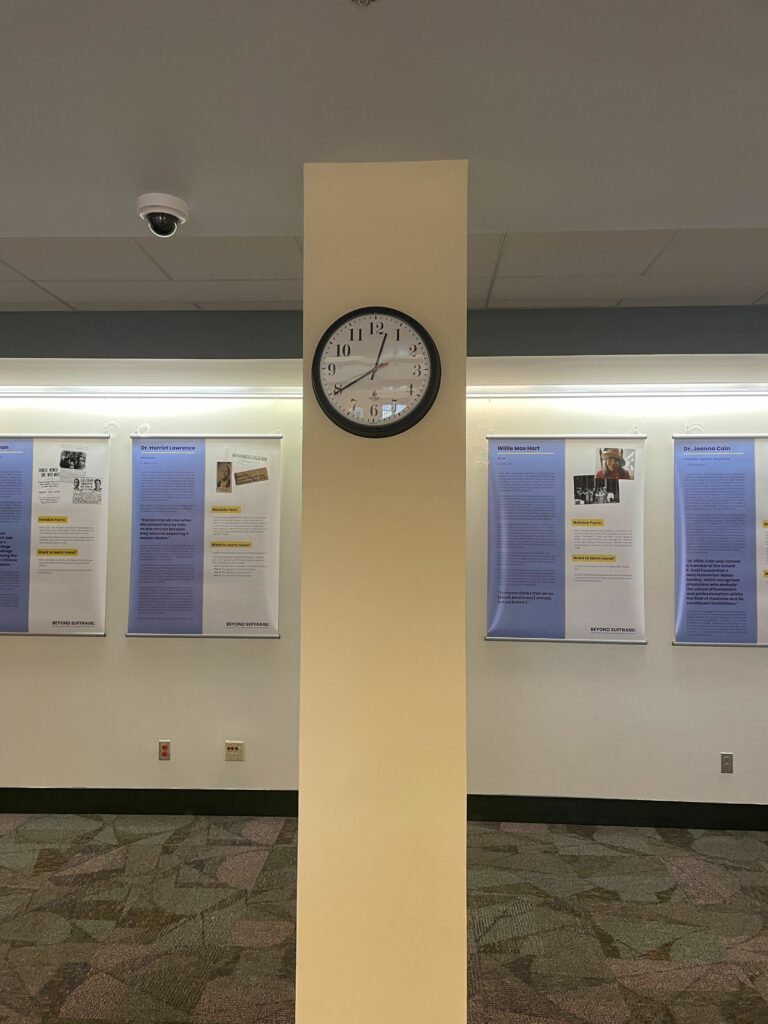
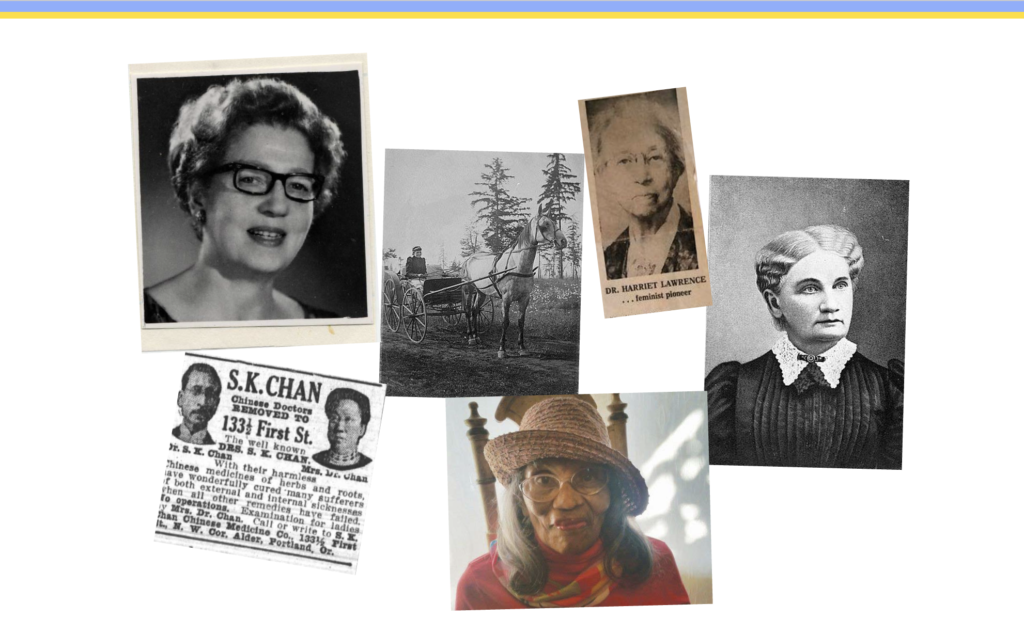
This exhibit was designed to increase awareness of the stories and voices of women who are not heard enough in our Oregon history of women’s rights. Systemic white supremacy, racism, and sexism combine to render some women less visible than others in our history. These women might not have been written about in their own time; past historians, researchers, writers, and archivists may have overlooked them or de-prioritized them; or the information about them, whether plentiful or scarce, may have come from biased perspectives. By bringing the voices and stories of these women into the forefront of our history, it is possible to show that we, as a society, value the experiences of women like them, both in the past and in the present. While this exhibit is linked to the commemoration of the centennial of national women’s suffrage, it is also important to recognize that not all women were able to vote following the ratification of the 19th amendment in 1920.
The curation and the development of Beyond Suffrage: Giving Voice to Oregon’s Unsung Women in Medicine has taken place almost exclusively remotely as a result of the COVID-19 pandemic. The research was done using born digital or digitized archival materials. We recognize that it’s impossible to represent everyone within the scope of this exhibit and that the work of including traditionally underrepresented voices in Oregon’s history is an ongoing collaborative effort.
We also acknowledge that Oregon State University in Corvallis, OR is located in the traditional territory of the Chepenefa (“Mary’s River”) band of the Kalapuya. After the Kalapuya Treaty (Treaty of Dayton) in 1855, Kalapuya people were forcibly removed to what are now the Grand Ronde and Siletz reservations, and are now members of the Confederated Tribes of the Grand Ronde Community of Oregon and the Confederated Tribes of Siletz Indians.
We would like to acknowledge the work done by the Oregon Historical Society and the Century of Action – a project of the Oregon Women’s History Consortium, as well as the work done by our archivists Tiah Edmunson- Morton and Natalia Fernández, our graphic designers Kallie Hagel and Emma Pattee, and our intern who led the development, curation, and writing of this exhibit, Sujittra Avery Carr. This exhibit would not be possible without them.
You can find information about the following women in the online exhibit!
Dr. Sarah Chan, Chinese Medicine Doctor, 1857-1924
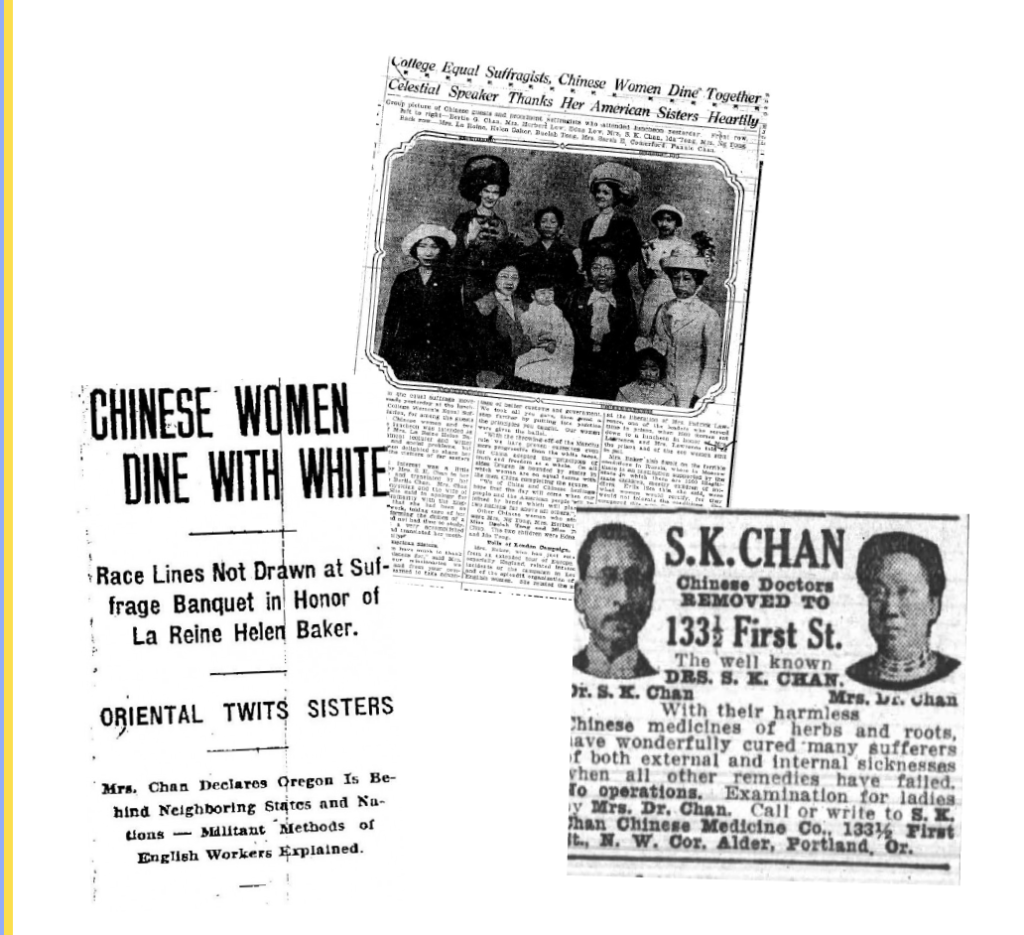
Dr. Harriet Lawrence, Pathologist, 1883-1974
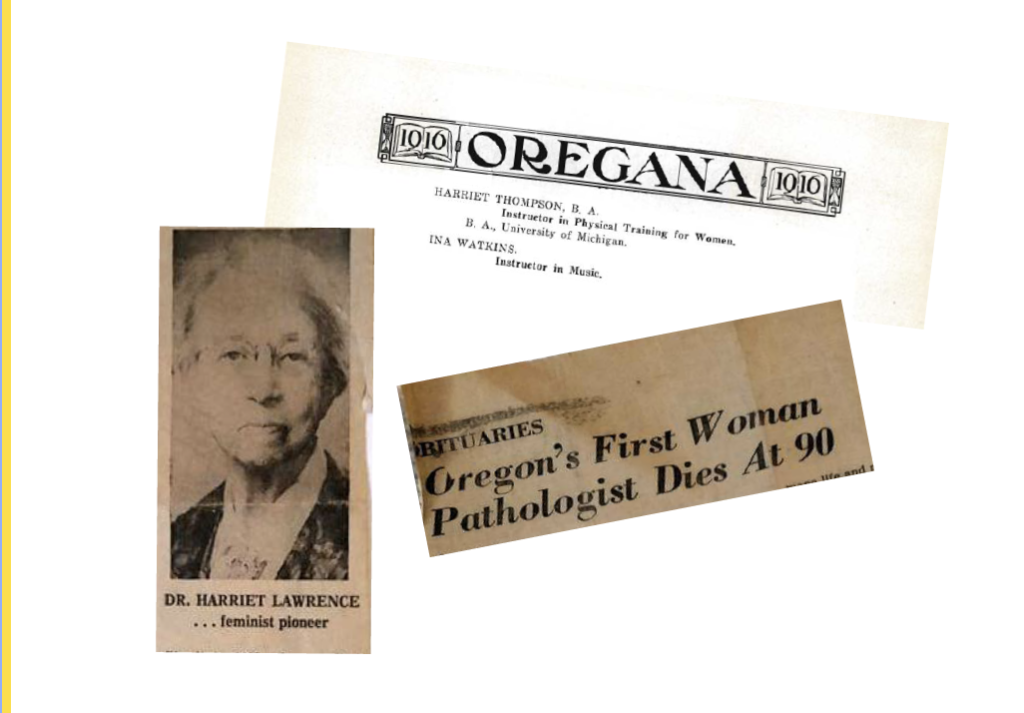
Dr. Lena Kenin, OB/GYN and Psychiatrist, 1897-1968

Dr. Mae Cardwell, Physician, 1853-1929

Dr. Joanna Cain, Physician, Teacher, Researcher, 1950-present

Mary Thompson, Pioneer Doctor, 1825-1919

Willie Mae Hart, Nurse, 1915-2017


